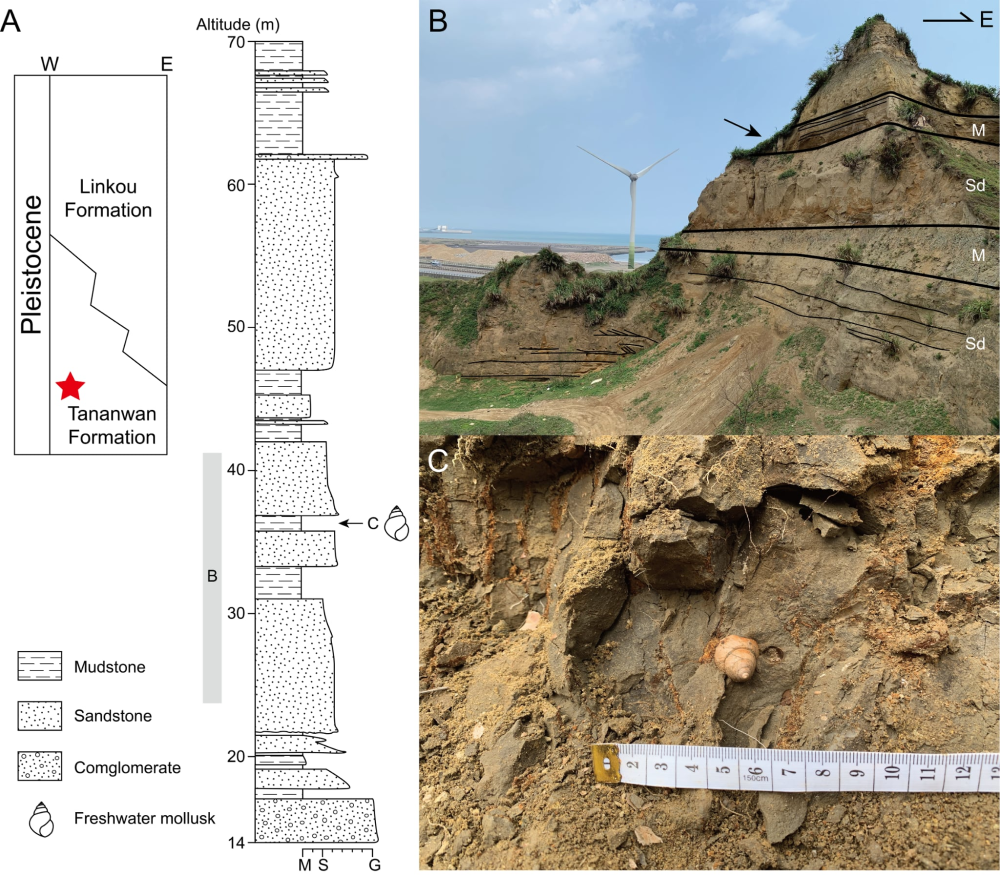A treasure trove of rare freshwater fossils has been described from Taiwan in a new study. Dating back to the Early Pleistocene, over 1 million years ago, they include a baby snail preserved inside its mother’s shell. Did she eat it? Oh no, these snails gave birth to live young and it’s only the second-ever fossil evidence found of this.
The rest of this article is behind a paywall. Please sign in or subscribe to access the full content.
Fossil sites across Taiwan have yielded lots of fossil mollusks, but over 99 percent of those found have represented marine species. There are a handful of known freshwater deposits, however, including the Tananwan Formation, which is between 1.46-1.24 million years old.
Five new-to-science species were identified from a 1-meter-thick fossiliferous mudstone layer retrieved from the formation. The most frequent among them was Sinotaia tuberculata, which matches up to the freshwater ecosystem seen here today.

The search for rare freshwater snail fossils in Taiwan.
Image credit: © Hsu C.-H., et al
This shows that present-day freshwater snail lineages in Taiwan were already established more than a million years ago. And then we come to the live birthers: Sinotaia quadrata.
In case you’re a little behind on your snail sex, typically these molluscs reproduce by laying eggs that hatch outside of the mother’s body. That means for the most part snails are oviparous, but live birth or viviparity is well-documented among snails alive today (we’ve even found it in toads).
However, finding this kind of live birth among snails in the fossil record is extremely rare. In fact, before now, it had only been reported once from the Early-Middle Pleistocene of Israel.
“In our study, among the 37 sampled S. quadrata specimens, two broken specimens were found to contain several juvenile shells inside the adult shell,” wrote the authors of the new study. “This may offer important clues regarding viviparid ecology and reproduction. Although these specimens are insufficient for a detailed ecological analysis of longevity, fecundity, and survival strategy, they represent only the second known case in the fossil record – fossil juvenile shells found inside female shells.”
Not only do these S. quadrata specimens show evidence of an incredibly rare snail behavior in the fossil record, but they’re also revealing the connections that enabled the fossil assemblages of Taiwan to share similarities with those of East Asia and Japan.
“The early presence of S. quadrata in Taiwan implies an earlier faunal exchange with continental East Asia, likely via recurrent Pleistocene land appearance,” said Dr Chun-Hsiang Chang is from the Department of Geology at the National Museum of Natural Science, Taiwan, commented in response to the paper. “By linking palaeontology, stratigraphy, and island biogeography, this work moves beyond taxonomy to address broader evolutionary and environmental questions. It is a landmark contribution that fills a key gap in Taiwan’s Quaternary record and deepens our understanding of freshwater biodiversity evolution in the western Pacific.”
The study is published in the journal Geodiversitas.
Source Link: Snail Fossils Over 1 Million Years Old Show Prehistoric Snails Gave Birth to Live Young